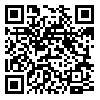BibTeX | RIS | EndNote | Medlars | ProCite | Reference Manager | RefWorks
Send citation to:
URL: http://sjsph.tums.ac.ir/article-1-5204-en.html

 , Halle Sadrzadeh yeganeh2
, Halle Sadrzadeh yeganeh2 
 , Fereydoun Siasi *
, Fereydoun Siasi * 
 3, Giti Sotoudeh4
3, Giti Sotoudeh4 
 , Seyed Mostafa Hosseini5
, Seyed Mostafa Hosseini5 
 , Seyed Vahid Mahdavi rad6
, Seyed Vahid Mahdavi rad6 

2- Ph.D. Assistant Professor, Department of Community Nutrition, School of Nutritional Sciences and Dietetics, Tehran University of Medical Sciences, Tehran, Iran
3- Ph.D. Professor, Department of Community Nutrition, School of Nutritional Sciences and Dietetics, Tehran University of Medical Sciences, Tehran, Iran ,
4- Ph.D. Associate Professor, Department of Community Nutrition, School of Nutritional Sciences and Dietetics, Tehran University of Medical Sciences, Tehran, Iran
5- Ph.D. Professor, Department of Epidemiology and Biostatistics, School of Public Health, Tehran University of Medical Sciences, Tehran, Iran
6- MSc. Student, Department of Physical Education, Payame Noor University, Center of Tehran- south, Tehran, Iran
Background and Aim: Food insecurity is a major public health problem in developing and developed countries , underlying developmental and psychological problems , nutrient deficiencies and chronic diseases . The aim of this study was to determine food security status and factors associated with food insecurity in households with children 4-5 years old under coverage of urban health centers and health houses in Mehriz, Iran.
Materials and Methods : This cross-sectional study was conducted in 2013 on 500 households with children 4-5 years old under coverage of urban health centers and health houses in Mehriz, Iran. The subjects were selected by cluster sampling. To determine household food security, the USDA 18-item food security questionnaire was used. Economic and socio-cultural status were assessed using a general-information questionnaire. The data obtained were analyzed using the Chi-square and independent t-tests and multiple logistic regression.
Results: The prevalence of household food insecurity was 39.6% (food insecurity without hunger 23.2%, and moderate and severe food insecurity with hunger 15% and 1.4%, respectively). Food insecurity was negatively correlated with parental education, parental occupational, monthly household income and maternal height ( p <0.008) and positively correlated with maternal age and family size ( p <0.004) . Based on the results of multivariate logistic regression , father's occupation and education level were predictors of food insecurity .
Conclusion: The prevalence of food insecurity in the population studied is high. Based on the results of this study, promotion of parental education, family job security and improved economic status, and control of family size are essential measures that should taken to improve household food security.
Received: 2015/03/11 | Accepted: 2015/03/11 | Published: 2015/03/11
| Rights and permissions | |
 |
This work is licensed under a Creative Commons Attribution-NonCommercial 4.0 International License. |



